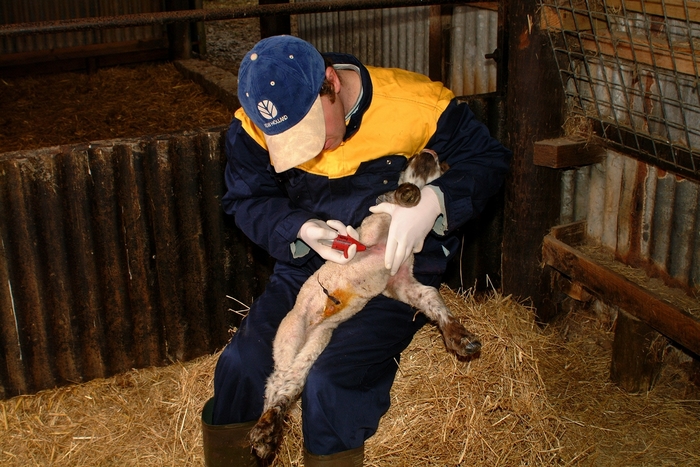UK sheep farmers take a keen interest in orf control and want more information on the benefits of flock vaccination against the disease and its effective application.
Recently published (September 2019) feedback from 570 UK sheep farmers surveyed last autumn (2018)1 clearly highlights the importance of practical veterinary advice when prescribing orf vaccine. More than one in three (36%) farms were vaccinating against orf.
“Orf is a debilitating and costly disease in UK sheep with financial losses most recently being estimated at between £1.06 and £14.03 per affected lamb2. Orf can also be transmitted to humans. Yet despite an effective vaccine being available, orf prevalence in England is still estimated to be 20% in lambs3,” said Dr Wendela Wapenaar from the School of Veterinary Medicine and Science based at the University of Nottingham, one of the organisers of the survey.
“This means that in England alone nearly 900,000 lambs are being infected with orf each year. With even more sheep populating the hills and uplands of Scotland and Wales there is a significant nationwide need to manage the damaging impact of this disease more effectively through vaccination.”
The orf survey was commissioned to help understand how UK sheep farmers use the available vaccine, and also to identify the motivators or any potential barriers to its use on farm.
“We want to be able to help farmers use the vaccine properly and address any misunderstandings about best practice. With its novel route of administration (no other vaccine for sheep is used this way), it is important that the vaccine is administered according to the instructions, which means via a scratch to the skin using the specific applicator,” said Dr Wapenaar.
“However, in terms of its practical use on farm, some practices were identified in a number of areas, such as site and timing of vaccination, employment of proper hygiene procedures and the storage of vaccine, which if addressed correctly would go a long way to overcoming concerns over the perceived vaccine efficacy.
“Indeed, only 27% of the sheep farms vaccinating against orf were administering the vaccine at the correct site on the animal, which should be in the axilla behind the front leg. In addition, 37% of vaccinators said they used the vaccine up to a week after opening the vial (shelf life is eight hours). 53% of farmers said they used gloves when vaccinating sheep but only 31% washed their hands just before and immediately after vaccination, which is good practice whatever medicine is being administered.”
Dr Wapenaar added that a third of farmers who were vaccinating their ewes as well as their lambs did so too close to lambing time. “Pregnant ewes should not be vaccinated less than seven weeks before housing for lambing or moving to lambing areas. This allows time for immunity to build and prevents infected scabs entering the lambing area,” she said.
Motivators and barriers to vaccine use
The main reason quoted for vaccinating was to reduce the effect of orf in lambs and in ewes on farms that had previously experienced an outbreak. Additionally, preventing zoonosis, avoiding loss of lambs during the sale season and being able to show sheep were also cited.
In terms of barriers to more widespread use of the available orf vaccine, farmer concerns over the difficulty and hassle of administering it via a scratch to the skin, vaccine efficacy, the ‘risk of making the disease worse’ and worry over self-injection were the most common feedback points.
“The survey findings also highlighted a requirement amongst vaccine users for more education about what constituted successful vaccination – in terms of delivering an immune response in the animal.”
Positively, Dr Wapenaar explained that despite some confusion amongst sheep farmers over the correct vaccination practices, survey respondents did express a strong desire to learn more about the results of the study, as well as about the vaccine and its effective implementation.
“We received 60 open text comments at the end of the survey, which suggests great interest in the practical importance of this study. What’s more, some farmers who had not seen the disease in their flock until last year expressed interest in vaccination.
“The feedback also confirmed that sheep farmers see their vet as the primary source of information about the orf vaccine and the majority wanted to know more about vaccinating both lambs and ewes. This reflects parallel research in the cattle sector indicating a strong interest for information about the practical aspects of vaccination. It is now up to vets and the wider animal health industry to work with farmers to grasp the educational opportunity involved in helping to ensure correct implementation and practical vaccine usage identified by this study,” she said.
Sheep farmers interested in better control of orf through correct vaccination of both lambs and ewes should consult their vet for practical advice.


